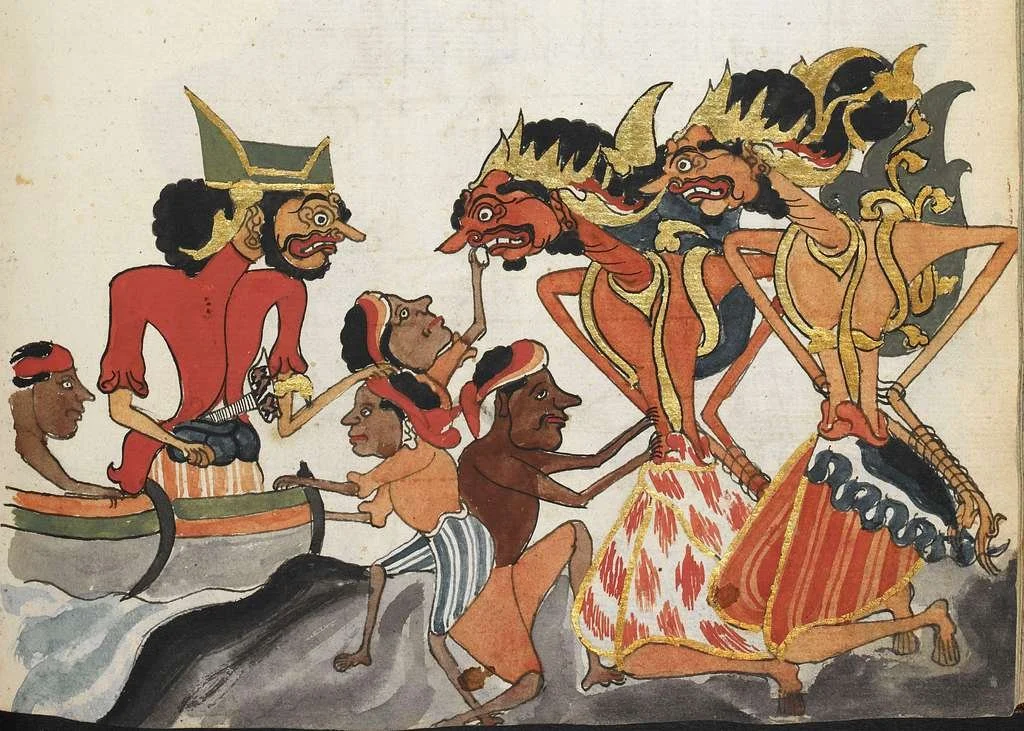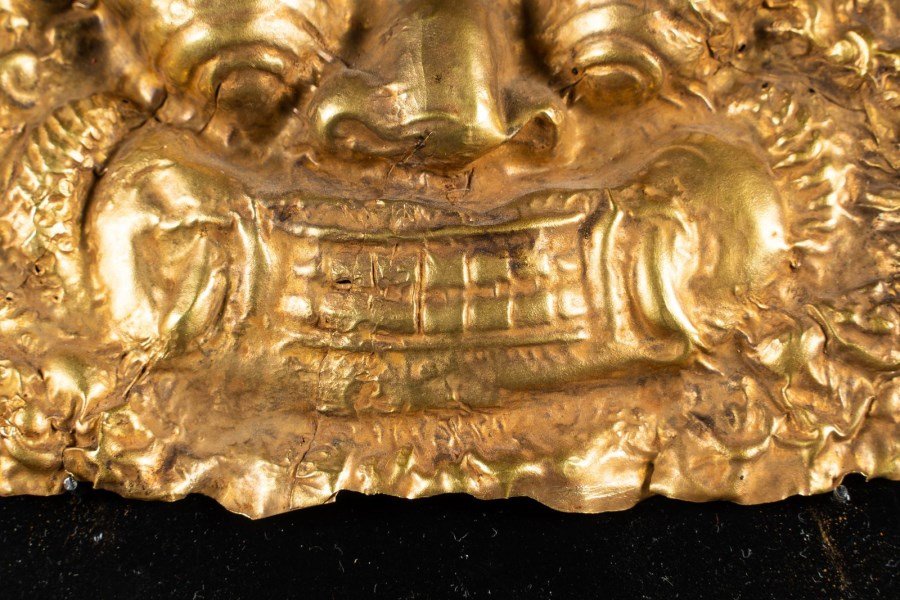
Article #3: The Serat Selarasa - An Exquisite Piece of Javanese Literature.
The Serat Selarasa is a Javanese manuscript that tells the story of Selarasa, a prince of Champa, and his two brothers, who are forced to leave their kingdom after their elder brother becomes king and treats them with disdain. Selarasa and his brothers undergo many adventures and trials during their travels, encountering holy men, princesses, pirates, and other dangers. The manuscript is a literary work that combines elements of romance, adventure, morality, and mysticism. It is also a remarkable example of Javanese manuscript art, as it contains 163 illustrations in the wayang style, depicting the characters and scenes from the story in vivid colours and details. The Serat Selarasa is perhaps the earliest finely-illustrated Javanese manuscript known, as it is dated 1804. It is also one of the most beautiful and well-preserved manuscripts in the British Library’s collection of Southeast Asian manuscripts.
Prince Selarasa and his two brothers paying respect to a holy figure. Photo Credit: Southeast Asia Library Group
The Serat Selarasa is important for several reasons. First, it is a valuable source of information about the culture and history of Java and Champa in the early 19th century. The manuscript reflects the influence of Islam, Hinduism, Buddhism, and local beliefs on the Javanese society and worldview. It also shows the interactions and exchanges between Java and other regions, such as Champa, China, India, and Europe. The manuscript contains references to historical events, such as the wars between Java and the Dutch East India Company, and the rise of the Mataram Sultanate. The manuscript also provides insights into the social structure, customs, values, and aesthetics of the Javanese people at the time
A scene depicting Prince Selarasa and his brothers on a Dutch Ship to Champa. Photo Credit: The British Library.
Prince Selarasa kneeling in front of a pious Muslim man who has stayed still in prayer and meditation for so long that vines have grown around him. Photo Credit: The British Library.
Furthermore, the Serat Selarasa is a masterpiece of Javanese literature and art, as it demonstrates the creativity and skill of the author and the illustrator. The manuscript is written in Javanese script and language, using a variety of poetic forms and rhetorical devices. The manuscript is also rich in symbolism and allegory, as it conveys moral and spiritual messages through the characters and events. The manuscript is especially notable for its illustrations, which are drawn in the wayang style, inspired by the Javanese shadow-puppet theatre. The illustrations are remarkable for their variety, complexity, and beauty. They depict the characters in different poses, expressions, and costumes, as well as the landscapes, architecture, and objects of the various settings. The illustrations also use different techniques, such as framing, perspective, and shading, to create a sense of depth and movement. The illustrations enhance the narrative and the mood of the story, as well as the visual appeal of the manuscript.
Prince Selarasa peeking into the canopy of the fierce Raja of Mendunga island’s daughter. Photo Credit: The British Library
Third, the Serat Selarasa is a rare and precious document, as it has survived the ravages of time and history. The manuscript was once owned by the wife of a Dutch East India Company official in Surabaya, before it was presented to Col. Colin Mackenzie, a British officer and collector, in 18122. The manuscript was then brought to England, where it was acquired by the British Museum in 1823. The manuscript was later transferred to the British Library, where it is now preserved and displayed. The manuscript is one of the few examples of Javanese manuscript art that have survived the destruction and deterioration caused by wars, natural disasters, insects, and humidity. The manuscript is also one of the few examples of Javanese manuscript art that have been digitised and made accessible to the public through the British Library’s website and other platforms.
Prince Selarasa and his two brothers reunite and embrace each other. Photo Credit: The British Library.
In summary, the Serat Selarasa is a Javanese manuscript that tells the story of Selarasa, a prince of Champa, and his two brothers, who are forced to leave their kingdom and face various challenges and adventures. The manuscript is a historical, literary, and artistic treasure, as it reveals the culture and history of Java and Champa in the early 19th century, showcases the creativity and skill of the Javanese author and illustrator, and represents the survival and preservation of Javanese manuscript art. The Selat Selarasa is an important and valuable document that deserves to be studied and appreciated by scholars and enthusiasts of Javanese culture and history.
Prince Selarasa, his wife and her attendant are carefully dressed to denote status. Photo Credit: The British Library.







